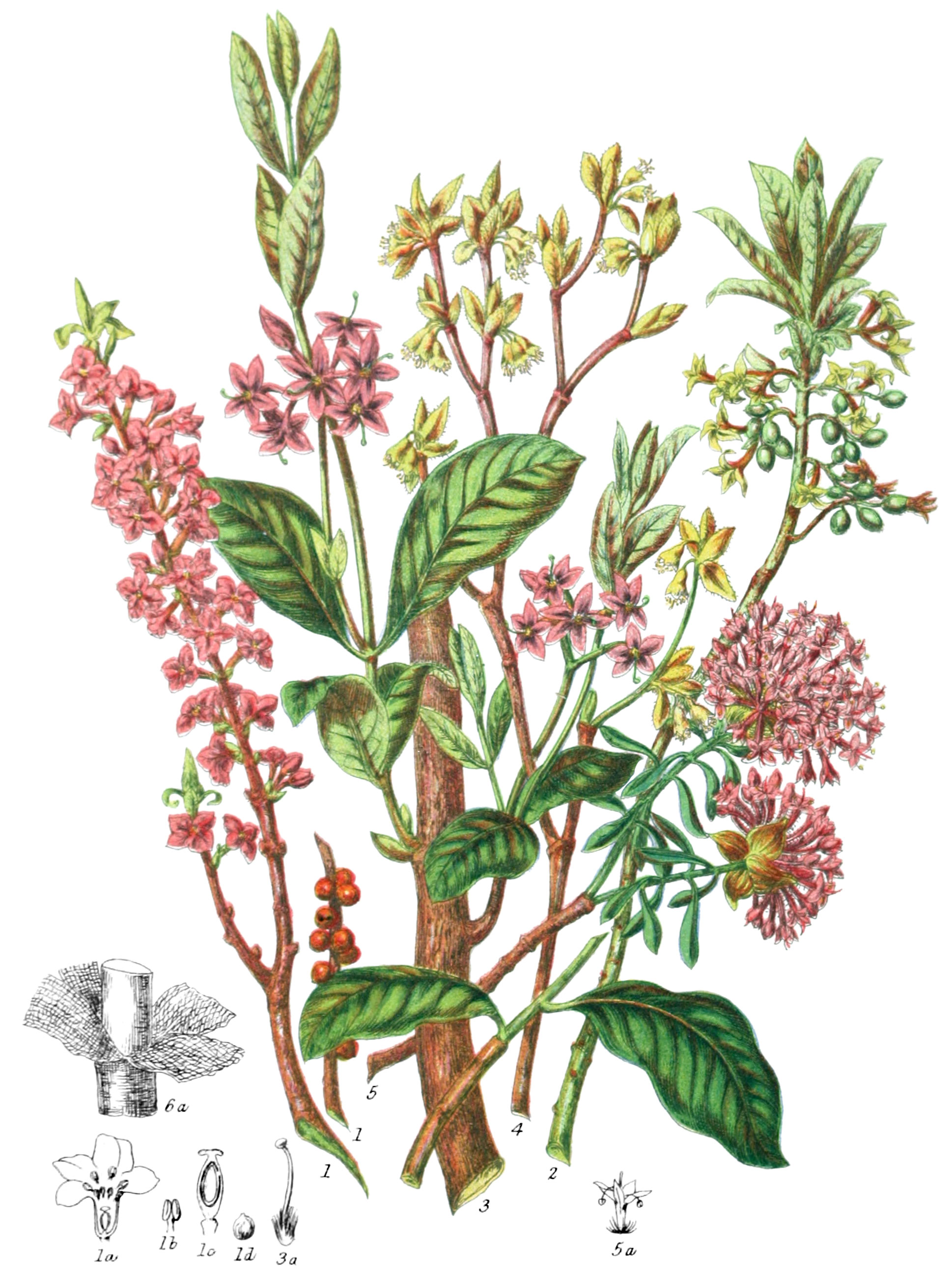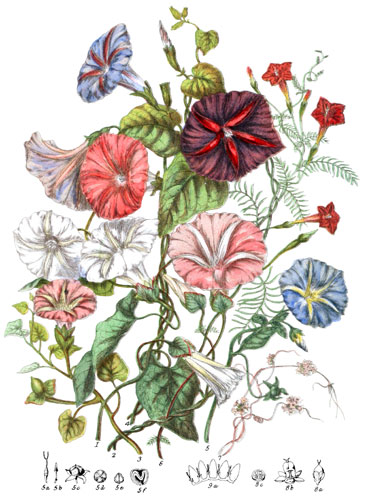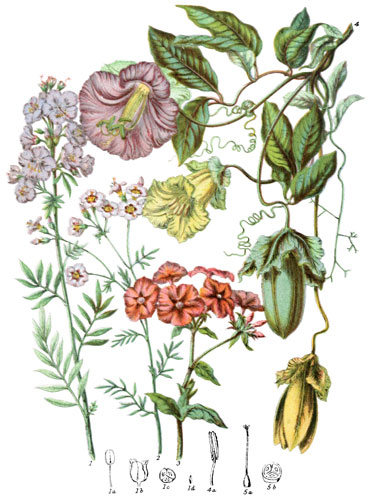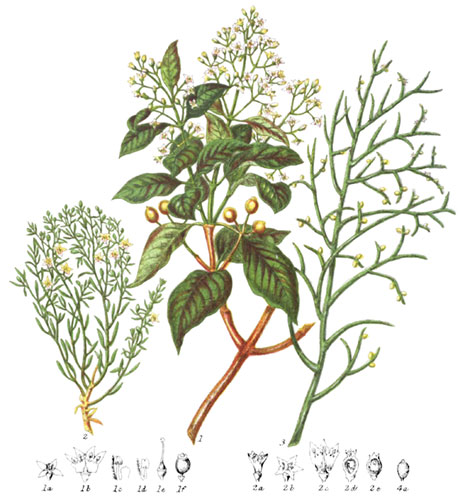Key characteristics
Shrubs with tenacious bark, and a few herbaceous plants. The leaves are alternate or opposite, without stipules, and entire at the edges. The flowers are in heads or spikes, at the ends of the branches, or at the base of the leaf-stalks, occasionally solitary, often enclosed in an involucre. The calyx is below the ovary, tubular, coloured, the top usually four-cleft, generally imbricated in the bud. The corolla is either wanting, or consists of scale-like petals in the mouth of the calyx. The stamens are of definite number, usually eight, or four, opposite the segments of the calyx; the anthers are two-celled, bursting lengthwise in the middle. The ovary is composed of a single carpel, the style is simple, the stigma is undivided. The fruit is hard, dry, and nutlike, or a drupe; the seed is single, and has thin or fleshy albumen, or none.
This Tribe has affinity with Proteaceæ and Elæagnaceæ, and is chiefly distinguished by the position of the anthers.
Extremely caustic juices exist in the bark of these shrubs.
Select plants in this order
Not all plants listed are illustrated and not all plants illustrated are listed.
- A Spanish species of Daphne, D. thymelea, was chosen to give a name to this Tribe.
- D. mezereum (1) is a native of English woods, and has long been an admired shrub in gardens, from the precocity of the fragrant flowers, coming forth on the branches in the first dawn of spring, while the leaf-buds are only beginning to unfold at the top. The delicate beauty of this and other spring flowers is duly appreciated in the early season of the year, whilst the specimens of the floral world are yet scarce. It grows in all parts of Europe, from north to south. The roots are large and branching, and are supposed to be a remedy for toothache; the acrid bark and berries are used for blisters in France.
- D. laureola (2) will flourish under the shade and dripping of trees, and is therefore valuable in a shrubbery: the roots have similar properties to those of D. mezereum, but are black when ripe instead of red; they are poisonous to all animals except birds, who eat them greedily as soon as they are ripe. The bark of the stem and branches is extremely tough as is that of nearly all this Tribe.
- From the inner bark of D. Bholua a very soft kind of paper is made in Nepal.
- The most remarkable example of inner bark is that of Lagetta lintearia, the vegetable lace-tree (6);* it consists of many layers of interlaced silky fibres, forming a thin netted substance, which may be stripped from the wood and extended to a considerable size, sometimes three or four feet in length. Charles II. received as a present, from the Governor of Jamaica, a cravat, frill, and ruffles, made of this lace-bark.
- D. odora is a white-flowered species of Japan; D. acuminata grows in Persia and Beloochistan above four thousand feet elevation; it is excessively unwholesome for cattle.
- D. pontica is one of the plants which imparts injurious qualities to the honey of the country, and is supposed to have been partly the cause of the fatal sickness which befell the army fo the Ten Thousand in the celebrated retreat under Xenophon.
- Dais laurifolia (3) is more known on the Continent than in this country; D. cotinifolia of the Cape of Good Hope is the species generally seen in shrubberies.
- Dirca palustris (4) is a native of bogs and watery places in various parts of North America, in shady wet woods from New York to Virginia. The branches are excessively tough; the bark is made into ropes, baskets, and other useful articles; the young plants are liable to be devoured by snails; it is therefore seldom planted here. The fruit has narcotic properties.
- Pimelea is a genus belonging to the Southern Hemisphere, and abounding in New Holland. Some are evergreen shrubs; all are hardy on our climate, and very ornamental plants; P. spectabilis (5) is the most beautiful species.
- Passerina tinctoria is one of those plants which yield a yellow dye for wool.
- The seeds of Inocarpus edulis are eatable when roasted, and have a pleasant flavour.
- The bark of Gnidia daphnoides affords strong material for ropes to the natives of Madagascar.
Locations
This Tribe is abundant at the Cape of Good Hope, common in the cold regions of India and South America. Lagetta belongs exclusively to the Tropics. Very few species are natives of Europe. Drapetes grows in the Antarctic Islands.
Legend
- Daphne mezereum, Mezereon. Woods, England.
- Flower, opened.
- Stamen.
- Section of Ovary.
- Seed.
- Daphne laureola, Spurge Laurel. England.
- Dais laurifolia, Laurel-leaved Dais. Cape of Good Hope.
- Pistil.
- Dirca palustris, Leather-wood. N. America.
- Pimelea spectabilis, Showy Pimelea. Swan River.
- Flower.
-
- Lagetta lintearia, Lace-bark, Jamaica
*6 was mentioned in the original description but only 6a was illustrated.
Explore more
Posters
Decorate your walls with colorful detailed posters based on Elizabeth Twining’s beautiful two-volume set from 1868.
Puzzles
Challenge yourself or someone else to assemble a puzzle of all 160 botanical illustrations.





